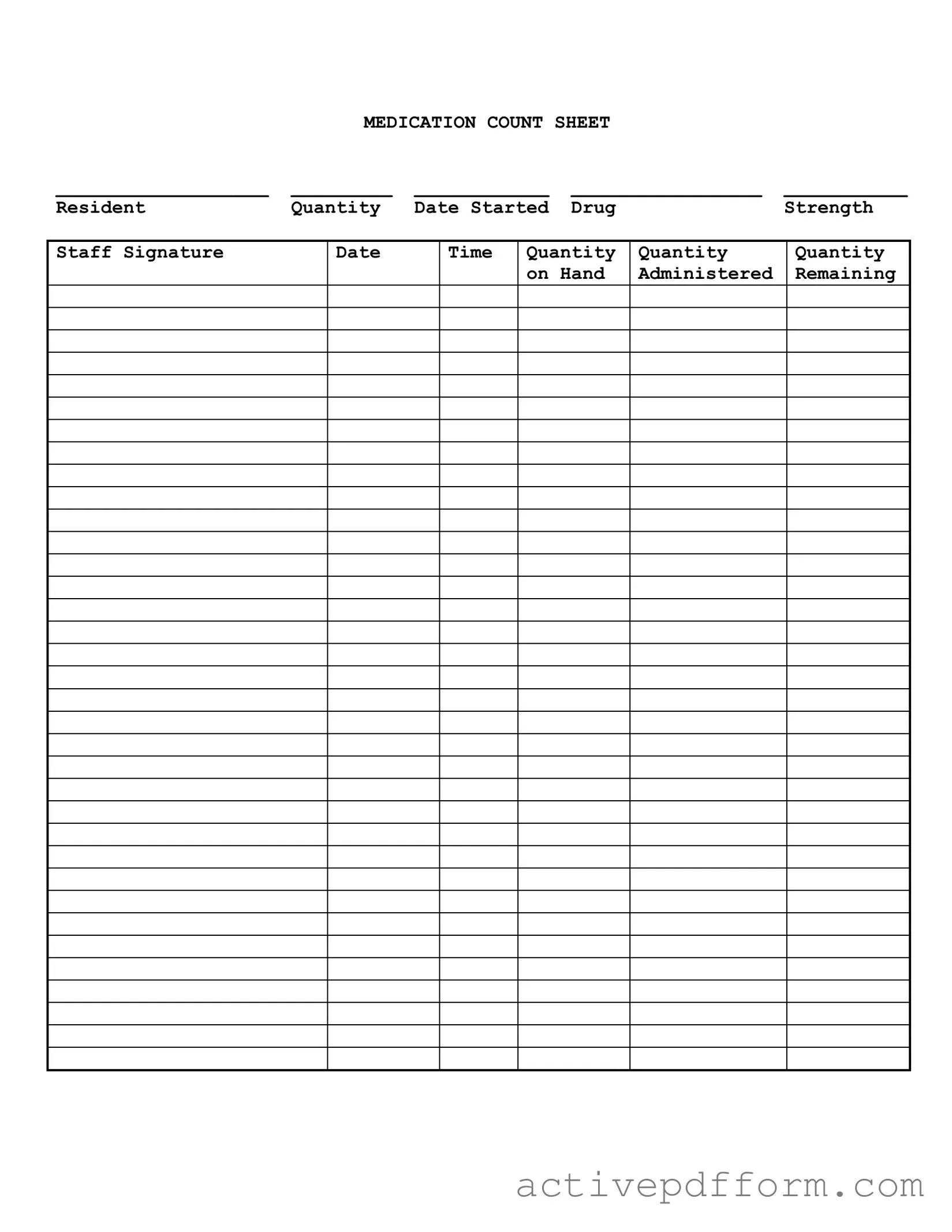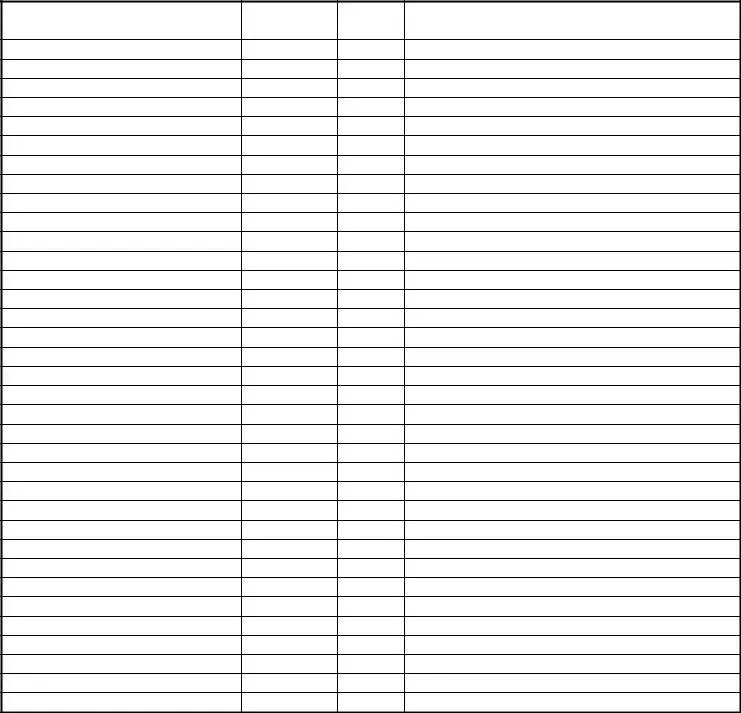What is the purpose of the Medication Count Sheet?
The Medication Count Sheet is designed to track the administration and inventory of medications for residents. It ensures that the quantity of medication on hand is accurately recorded and monitored, helping to prevent errors and maintain safety in medication management.
What information is required on the Medication Count Sheet?
The form requires several key pieces of information, including the resident's name, the quantity of medication, the date the medication was started, the drug strength, staff signatures, and timestamps. Additionally, it tracks the quantity administered and the remaining quantity on hand.
Who is responsible for filling out the Medication Count Sheet?
Staff members who administer medications are responsible for completing the Medication Count Sheet. This includes documenting the quantity administered and ensuring that the remaining medication is accurately counted and recorded.
How often should the Medication Count Sheet be updated?
The Medication Count Sheet should be updated each time medication is administered. This ensures real-time accuracy regarding the medication inventory and helps maintain compliance with health and safety regulations.
What should be done if there is a discrepancy in the medication count?
If a discrepancy is found between the recorded quantity and the actual quantity on hand, it is crucial to investigate the cause immediately. Staff should review the administration records, recount the medications, and report the issue to a supervisor or the appropriate authority for further action.
Is staff training required for using the Medication Count Sheet?
Yes, staff should receive training on how to properly fill out the Medication Count Sheet. Understanding the importance of accurate record-keeping and the procedures for documenting medication administration is essential for ensuring compliance and resident safety.
Can the Medication Count Sheet be used for all types of medications?
The Medication Count Sheet is generally applicable to all medications administered to residents. However, specific protocols may vary depending on the type of medication or the facility’s policies. It is important to refer to the facility’s guidelines for any exceptions.
What happens to the Medication Count Sheet after it is completed?
After completion, the Medication Count Sheet should be securely stored according to the facility's record-keeping policies. This ensures that the documentation is available for audits, reviews, and compliance checks as needed.
How can staff ensure accuracy when using the Medication Count Sheet?
To ensure accuracy, staff should double-check their entries, confirm counts with a second staff member when possible, and follow established procedures for medication administration. Regular audits of the Medication Count Sheet can also help identify potential issues before they become significant problems.
What should be done if a medication is not administered as scheduled?
If a medication is not administered as scheduled, staff should document the reason for the missed dose on the Medication Count Sheet. It is essential to communicate with the healthcare team to determine the appropriate next steps for the resident's care.

